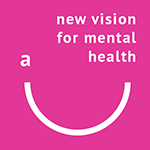This article from David Healy and Harriet Vogt has been published by Mad in America. It begins:
“There is a core concept shaping the ‘market’ in health, the concept of an assay, that few doctors or patients understand. Even fewer spot the role assays play. This article explains what assays are, how they entered healthcare and the consequences of failing to grasp the role they play.
Before Thalidomide
By 1950, we were starting to get the first new drugs that worked well. So well that no Randomized Controlled Trials (RCTs) were needed to show they worked.
Who said no RCTs were needed? Tony Hill, who in 1947, created RCTs. For Hill conversations between doctors and patients were key. If we are taking a medicine, we depend on someone able to look closely at and listen intently to us. If, instead, we insist on randomization, placebos and double-blinding, Hill said, we’d have lost the plot. RCTs, besides, generate average effects that told him nothing about how to treat the person in front of him.
Louis Lasagna, a big Hill fan, was the leading American cheerleader for RCTs in the 1950s. He had an unfortunate idea. There were still some old drugs around that didn’t work and RCTs might help eliminate these.
This idea went nowhere, until a birth defect crisis triggered by thalidomide, a sleeping pill, struck. In 1962, needing to be seen to respond, politicians adopted Lasagna’s idea of getting industry to prove their drugs work using RCTs. They overlooked an RCT of thalidomide Lasagna had already done, which showed it worked and was free of side effects. Thalidomide had sailed over the hurdle being put in place to prevent a repeat …”
You can read more from here.



